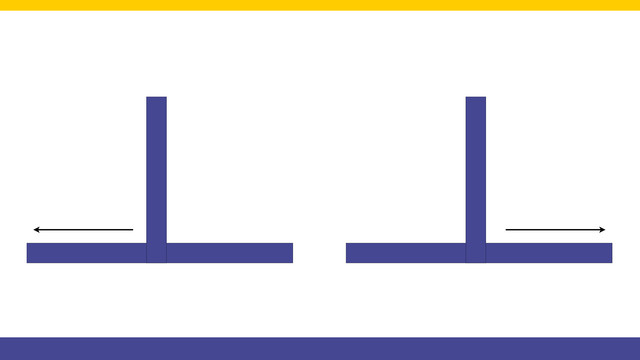

Gapped & Crossed Line Following. Part 6. Move after the Gap
We've detected the gap. It's time to move over it. This is difficult because we have to detect where the line is after the 0.1 meters gap on the line following field.
- #209
- 17 Feb 2016


We've detected the gap. It's time to move over it. This is difficult because we have to detect where the line is after the 0.1 meters gap on the line following field.


Next important state is Turn Right with our robot. This happens when we detect a line on the right.


Next state in our state machine programming pattern is the "Turn Left" state and the corresponding behaviour.


We can Turn Right. We can Turn Left. How do we decide which way to go if there are lines both to the left and to the right. Check out the video.


All worked as expected, up until know because the robot got lost. This happens when we turn right and the line does not continue to the right. Now the robot must somehow understand that it is "lost" and escape.


We discuss the state of "Lost" and the different ways we could escape this state. We also build the next step of our State machine programming pattern where the next state is determined by the previous state.


The final video from the course. The robot escapes the state where it is lost. This happens if it can not continue in any direction.


We extract the Proportional Line Following algorithm into a new block with parameters. This allows us to experiment with the Threshold, Constant Speed and Relaxation Coefficient. You can now easily use the block in you other programs without having to implement it.

It's a box! It's a robot! It's a box robot. Box robots are very popular on different robotics competitions involving LEGO Mindstorms like the FIRST LEGO League or World Robotics Olympiad. Let's start with a brief introduction and continue in the next videos with explanation on the features of the robot and why such robots are frequently used.


With the shape of a box it is very easy to align this robot to different wall and to add very stable pinless attachments to it. The goal of the video is to discuss this feature of this particular robot construction.


Sometimes robot builders are so overwhelmed with the process of constructing a robot that they forget two very important parts. The brick should be accessible and the cables should not get in the way. These are referred by us as Brick Accessibility and Cable Management.


This video discusses the fact the robot requires a few more parts that are available in the LEGO Mindstorms EV3 robotics sets. We have a number of other constructions that require less parts, but for this particular robot construction we have decided to go beyond the standard sets, cheaply buy a few more parts and build a whole box robot with them.


In this video we look at the way this robot uses the LEGO Mindstorms EV3 motors. How are they attached and the what the rotation of the motor is transferred to the attachments.


In this episode we look at the way this robot is balanced. A well-balanced robot could handle heavier attachments without losing track of its position on the robotics competition field.


In this video we discuss how do we transfer power from the motors that are "inside the robot box" to the gear wheels that are "outside the robot box".